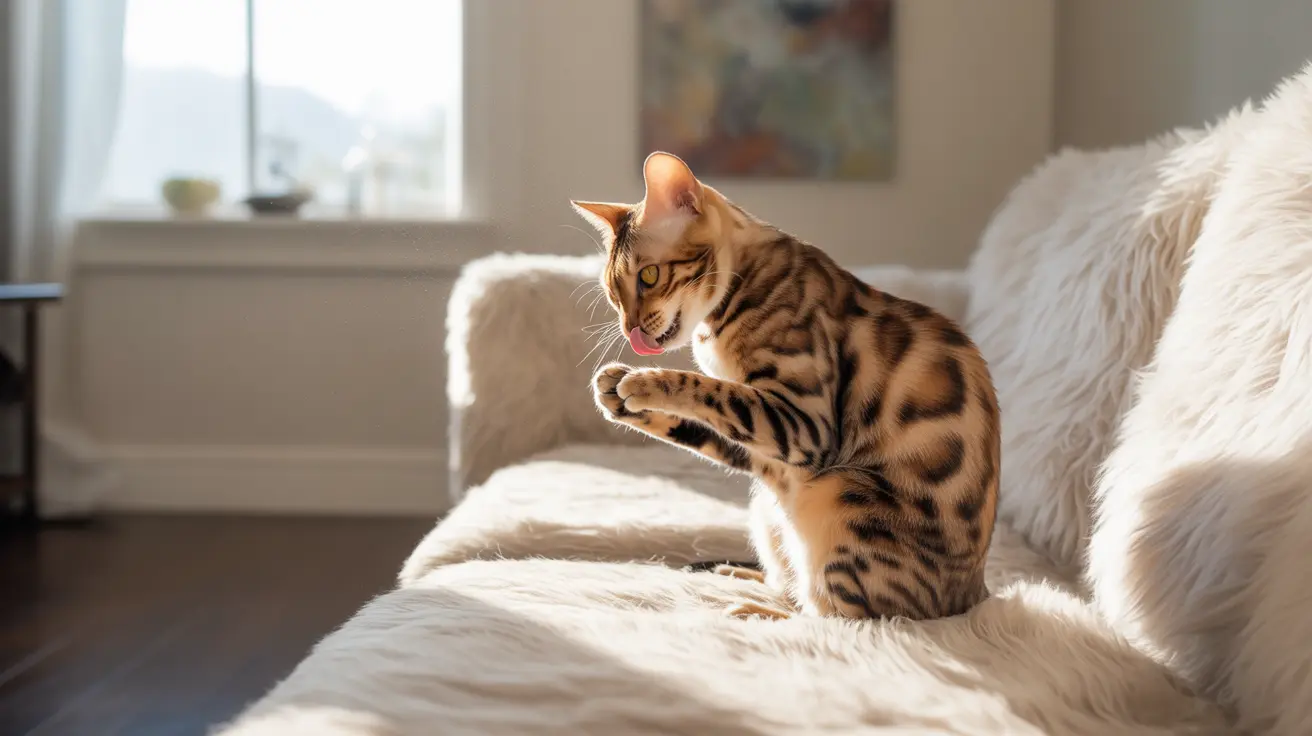When your feline friend starts grooming excessively, it can be both concerning and confusing. While cats are naturally meticulous groomers, spending up to 50% of their waking hours maintaining their coat, overgrooming goes beyond normal cleaning behavior and can indicate underlying health or psychological issues that require attention.
In this comprehensive guide, we'll explore the causes, symptoms, and solutions for cat overgrooming, helping you understand when normal grooming crosses the line into problematic behavior and what steps you should take to help your pet.
Understanding Cat Overgrooming
Overgrooming occurs when cats lick, bite, or chew their fur beyond normal grooming needs, often resulting in hair loss, skin irritation, or even open wounds. This behavior can be triggered by various factors, from medical conditions to psychological stress, making it crucial to identify the root cause for effective treatment.
Common Causes of Excessive Grooming
Medical Triggers
Several physical conditions can lead to overgrooming:
- Flea allergies and infestations
- Skin infections (bacterial or fungal)
- Food or environmental allergies
- Hormonal imbalances
- Pain or discomfort from underlying conditions
Psychological Factors
Mental and emotional triggers often contribute to overgrooming:
- Stress and anxiety
- Changes in environment or routine
- Separation anxiety
- Boredom or lack of stimulation
- Social conflicts in multi-cat households
Identifying Signs of Overgrooming
Watch for these warning signs:
- Bald patches or thinning fur
- Raw or irritated skin
- Increased hairball production
- Obsessive licking of specific areas
- Avoiding normal activities due to excessive grooming
Treatment Approaches
Medical Solutions
Treatment typically begins with a thorough veterinary examination to rule out physical causes:
- Parasite treatment and prevention
- Allergy medication or specialized diets
- Antibiotics for skin infections
- Pain management if necessary
Behavioral Interventions
For stress-related overgrooming:
- Environmental enrichment
- Regular play sessions
- Pheromone products
- Anti-anxiety medications when prescribed
- Consistent daily routines
Prevention Strategies
Help prevent overgrooming by:
- Maintaining regular veterinary check-ups
- Using year-round flea prevention
- Providing environmental enrichment
- Managing household stress levels
- Establishing consistent routines
Frequently Asked Questions
Why is my cat overgrooming and losing fur in certain areas?
Cats may overgroom and lose fur due to various triggers, including allergies, skin infections, stress, or anxiety. The location of fur loss often provides clues about the underlying cause. For example, belly grooming might indicate stress or urinary issues, while widespread hair loss could suggest allergies.
What medical conditions can cause my cat to groom excessively?
Common medical causes include flea allergies, food allergies, skin infections, hormonal imbalances, and pain from conditions like arthritis or urinary issues. Any condition causing discomfort or irritation can trigger excessive grooming.
How can stress or anxiety lead to overgrooming in cats?
Cats often use grooming as a self-soothing behavior. When stressed or anxious, they may groom excessively to release endorphins that help them feel calmer. This can become a compulsive behavior if the underlying stress isn't addressed.
What are the signs that my cat's overgrooming needs veterinary attention?
Seek veterinary care if you notice bald patches, skin irritation, open sores, or if the grooming interferes with normal activities. Also consult a vet if your cat shows additional symptoms like changes in appetite or behavior.
How do I stop my cat from overgrooming due to behavioral causes?
Address behavioral overgrooming by reducing stress, providing environmental enrichment, maintaining consistent routines, and using calming aids like pheromone products. In severe cases, your veterinarian may recommend behavior modification therapy or anti-anxiety medication.
Conclusion
While cat overgrooming can be concerning, understanding its causes and recognizing early warning signs allows for prompt intervention. Whether the root cause is medical or behavioral, working closely with your veterinarian will help develop an effective treatment plan to restore your cat's normal grooming habits and overall well-being.






